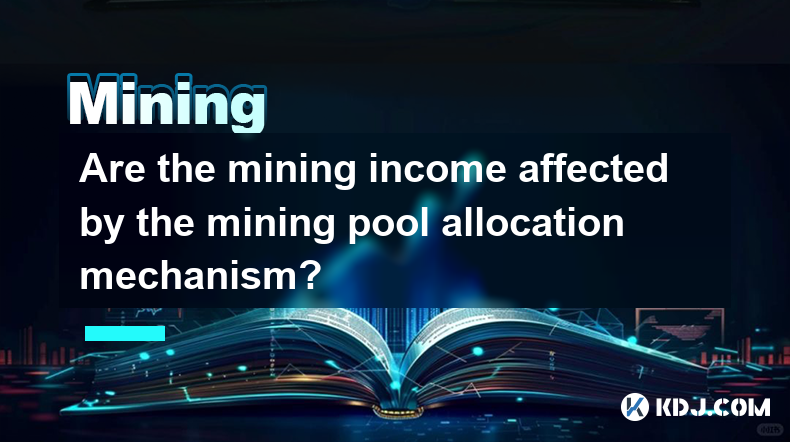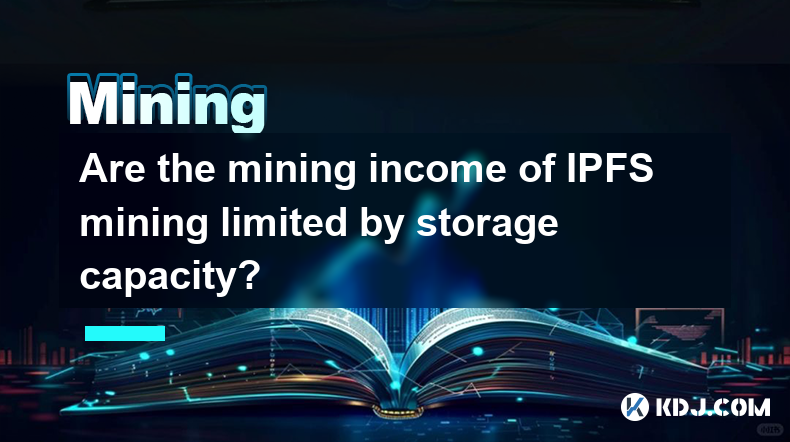-
 Bitcoin
Bitcoin $83,444.4038
0.86% -
 Ethereum
Ethereum $1,842.3890
1.50% -
 Tether USDt
Tether USDt $1.0001
0.02% -
 XRP
XRP $2.1210
-0.96% -
 BNB
BNB $604.5223
0.35% -
 Solana
Solana $126.6033
1.20% -
 USDC
USDC $1.0001
0.01% -
 Dogecoin
Dogecoin $0.1673
-0.90% -
 Cardano
Cardano $0.6570
-1.89% -
 TRON
TRON $0.2377
2.73% -
 Toncoin
Toncoin $4.0993
7.99% -
 Chainlink
Chainlink $13.5616
-0.59% -
 UNUS SED LEO
UNUS SED LEO $9.1338
-5.19% -
 Stellar
Stellar $0.2677
0.09% -
 Avalanche
Avalanche $18.9265
-2.12% -
 Shiba Inu
Shiba Inu $0.0...01247
-0.49% -
 Sui
Sui $2.2925
-3.09% -
 Hedera
Hedera $0.1645
-3.24% -
 Polkadot
Polkadot $4.0564
-0.33% -
 Litecoin
Litecoin $83.1770
-3.75% -
 MANTRA
MANTRA $6.2700
0.19% -
 Bitcoin Cash
Bitcoin Cash $304.7442
0.32% -
 Bitget Token
Bitget Token $4.5110
-1.62% -
 Dai
Dai $0.9999
0.00% -
 Ethena USDe
Ethena USDe $1.0000
0.01% -
 Pi
Pi $0.7226
-6.76% -
 Hyperliquid
Hyperliquid $13.2021
4.13% -
 Monero
Monero $215.2074
-0.79% -
 Uniswap
Uniswap $6.0141
0.86% -
 Aptos
Aptos $5.3487
0.66%
Why is the noise of my ASIC miner suddenly increased?
A sudden increase in ASIC miner noise often indicates cooling issues like higher temperatures, fan failure, or dust accumulation; regular maintenance can mitigate this.
Mar 29, 2025 at 08:22 am

Understanding ASIC Miner Noise
ASIC (Application-Specific Integrated Circuit) miners are powerful machines designed for cryptocurrency mining. They generate significant heat during operation, and this heat needs to be dissipated effectively. Fans are crucial for cooling, and their speed directly impacts the noise level. A sudden increase in noise usually indicates a problem with the cooling system or the miner itself.
Potential Causes of Increased Noise
Several factors can contribute to a sudden increase in the noise produced by your ASIC miner. Let's explore some of the most common reasons:
Increased Fan Speed: The most frequent cause is a rise in the operating temperature. The miner's internal temperature sensors detect higher temperatures, triggering the fans to spin faster to compensate. This increased fan speed directly translates to more noise. Check your miner's monitoring software to confirm the temperature.
Fan Failure or Degradation: A failing fan might produce unusual noises, such as rattling, grinding, or whirring sounds. A degraded fan, losing its efficiency, might struggle to maintain the required airflow, causing the other fans to compensate and increase their speed, resulting in higher overall noise.
Dust Accumulation: Dust buildup on the heatsinks and fans restricts airflow, forcing the fans to work harder to maintain adequate cooling. This increased workload leads to higher fan speeds and increased noise. Regular cleaning is crucial for maintaining optimal performance and noise levels.
Loose Components: Internal components, such as the heatsinks or fans themselves, might have become loose. This can cause vibrations that amplify the noise. Inspect your miner for any loose parts.
Hardware Malfunction: A more serious issue could be a malfunctioning component within the ASIC miner itself. This might lead to overheating and subsequently, increased fan speeds in an attempt to cool down the system. This warrants immediate attention.
Power Supply Issues: Problems with the power supply unit (PSU) can also lead to overheating and increased noise. A failing PSU might not deliver power efficiently, causing components to overheat and trigger the fans to compensate.
Troubleshooting Steps
If your ASIC miner's noise has suddenly increased, follow these steps to diagnose and resolve the problem:
Check Miner Temperature: Use your miner's monitoring software (if available) to check the internal temperature. High temperatures indicate a cooling problem.
Inspect the Fans: Visually inspect all fans for any signs of damage, dust accumulation, or loose connections.
Clean the Miner: Thoroughly clean the miner, removing dust from the heatsinks and fans using compressed air. Ensure you power down the miner completely before cleaning.
Check for Loose Components: Carefully inspect the miner for any loose parts, paying attention to the fans and heatsinks.
Listen Carefully to the Noise: Try to pinpoint the source of the increased noise. Is it coming from a specific fan? A grinding sound could indicate bearing failure.
Monitor Power Supply: Check if the power supply is running smoothly and not overheating.
Consider Professional Help: If you're unable to identify and resolve the issue, seek help from a qualified technician. Attempting repairs without proper knowledge could cause further damage.
Detailed Explanation of Potential Issues
Increased Fan Speed: Most ASIC miners have temperature sensors that automatically adjust fan speeds based on the internal temperature. A sudden increase in noise often signifies the miner is working harder to compensate for higher-than-normal temperatures. This is usually the first thing to check.
Fan Failure: A failing fan will often produce unusual noises like rattling, grinding, or a high-pitched whine. These sounds are distinct from the normal humming of a functioning fan. Replacing a faulty fan is often a simple fix.
Dust Accumulation: Dust acts as an insulator, preventing efficient heat dissipation. A buildup of dust significantly reduces cooling efficiency, forcing the fans to work harder and increase noise levels. Regular cleaning is essential for maintaining optimal performance and reducing noise.
Loose Components: Loose components can cause vibrations that amplify the noise produced by the fans. Tightening loose screws or securing components can significantly reduce noise levels.
Hardware Malfunction: A malfunctioning component, such as a failing chip or a power supply issue, can lead to overheating. This will trigger the fans to run at maximum speed, resulting in a significant increase in noise. This situation requires immediate attention to prevent further damage.
Frequently Asked Questions
Q: My ASIC miner is making a loud grinding noise. What should I do?
A: A grinding noise usually indicates a failing fan bearing. You should immediately power down the miner to prevent further damage and replace the faulty fan.
Q: How often should I clean my ASIC miner?
A: The frequency depends on the environment, but ideally, you should clean your miner at least once a month, or more often if it's in a dusty environment.
Q: My miner's temperature is normal, but the noise is still high. What could be the cause?
A: Even with normal temperatures, a failing fan, loose components, or a power supply issue could still cause increased noise. Inspect the fans and components carefully.
Q: Can I replace the fans myself?
A: Yes, but ensure you purchase compatible replacement fans. If you're not comfortable working with electronics, it's best to seek professional help.
Q: What should I do if I suspect a hardware malfunction?
A: If you suspect a hardware malfunction, immediately power down the miner and contact the manufacturer or a qualified technician for assistance. Continuing to operate a malfunctioning miner could cause further damage.
Disclaimer:info@kdj.com
The information provided is not trading advice. kdj.com does not assume any responsibility for any investments made based on the information provided in this article. Cryptocurrencies are highly volatile and it is highly recommended that you invest with caution after thorough research!
If you believe that the content used on this website infringes your copyright, please contact us immediately (info@kdj.com) and we will delete it promptly.
- The Crypto Market Continued Slumping on Monday, with the Fear and Greed Index Slipping to 24
- 2025-03-31 23:40:12
- Why You Should Care About Dogecoin ($DOGE) Right Now
- 2025-03-31 23:40:12
- Solaxy ($SOLX) Smashes Past $28.5M Presale Milestone, Unveiling Fresh Developer Upgrades
- 2025-03-31 23:35:12
- After a Spirited Attempt to Breach Critical Resistance Levels, the Canine-Themed Digital Asset Has Encountered a Significant Price Correction
- 2025-03-31 23:35:12
- XRP (XRP) Has Lost More Than 40% Since Hitting a Multi-Year High Near $3.40 in January
- 2025-03-31 23:30:13
- MicroStrategy Buys the Dip, Adding 22,048 Bitcoins (BTC) to Its Holdings
- 2025-03-31 23:30:13
Related knowledge

Are the mining income affected by the mining pool allocation mechanism?
Mar 31,2025 at 05:49pm
Understanding Mining Pool Allocation MechanismsMining pools aggregate the hashing power of many miners to increase the chances of successfully mining a block. The reward for successfully mining a block is then distributed among the pool's participants based on their contribution – usually measured in shares submitted. The allocation mechanism determine...

Are the mining income of IPFS mining limited by storage capacity?
Apr 01,2025 at 12:00am
Understanding IPFS Mining and its Revenue ModelIPFS (InterPlanetary File System) mining, unlike Bitcoin mining which relies on computational power, focuses on providing storage and bandwidth to the network. Miners earn rewards by making their storage available and contributing to the overall health and efficiency of the decentralized network. The amoun...

What is the difference between mining machine mining that can earn 2,000 yuan a day and ASIC mining?
Mar 31,2025 at 08:56pm
Understanding High-Earning Mining Machines and ASICsThe claim of a mining machine earning 2,000 yuan (approximately $280 USD) daily is a bold one, requiring careful examination. This level of profitability is highly dependent on several factors, and isn't necessarily indicative of a specific type of mining machine. It's crucial to understand that profi...

What are the hardware requirements for CPU mining?
Mar 31,2025 at 10:49pm
Understanding CPU Mining in the Cryptocurrency LandscapeCPU mining, once a prevalent method for earning cryptocurrencies, has significantly diminished in popularity due to the rise of specialized hardware like ASICs and GPUs. While still technically possible for some less computationally intensive cryptocurrencies, it's crucial to understand its limita...

Why is mining algorithm more suitable for graphics card processing?
Mar 31,2025 at 05:28pm
The Parallel Processing Power of GPUs in Cryptocurrency MiningThe core reason why many cryptocurrency mining algorithms are more suitable for graphics card (GPU) processing lies in their inherent architecture. GPUs are designed for parallel processing, handling many calculations simultaneously. This contrasts with CPUs, which excel at sequential proces...

How to solve the cooling problem of graphics card mining?
Mar 31,2025 at 02:35pm
Understanding GPU Cooling in Cryptocurrency MiningGraphics cards (GPUs) generate significant heat during cryptocurrency mining, demanding efficient cooling solutions to prevent damage and maintain optimal performance. Overheating can lead to reduced hash rates, instability, and even permanent hardware failure. This necessitates a proactive approach to ...

Are the mining income affected by the mining pool allocation mechanism?
Mar 31,2025 at 05:49pm
Understanding Mining Pool Allocation MechanismsMining pools aggregate the hashing power of many miners to increase the chances of successfully mining a block. The reward for successfully mining a block is then distributed among the pool's participants based on their contribution – usually measured in shares submitted. The allocation mechanism determine...

Are the mining income of IPFS mining limited by storage capacity?
Apr 01,2025 at 12:00am
Understanding IPFS Mining and its Revenue ModelIPFS (InterPlanetary File System) mining, unlike Bitcoin mining which relies on computational power, focuses on providing storage and bandwidth to the network. Miners earn rewards by making their storage available and contributing to the overall health and efficiency of the decentralized network. The amoun...

What is the difference between mining machine mining that can earn 2,000 yuan a day and ASIC mining?
Mar 31,2025 at 08:56pm
Understanding High-Earning Mining Machines and ASICsThe claim of a mining machine earning 2,000 yuan (approximately $280 USD) daily is a bold one, requiring careful examination. This level of profitability is highly dependent on several factors, and isn't necessarily indicative of a specific type of mining machine. It's crucial to understand that profi...

What are the hardware requirements for CPU mining?
Mar 31,2025 at 10:49pm
Understanding CPU Mining in the Cryptocurrency LandscapeCPU mining, once a prevalent method for earning cryptocurrencies, has significantly diminished in popularity due to the rise of specialized hardware like ASICs and GPUs. While still technically possible for some less computationally intensive cryptocurrencies, it's crucial to understand its limita...

Why is mining algorithm more suitable for graphics card processing?
Mar 31,2025 at 05:28pm
The Parallel Processing Power of GPUs in Cryptocurrency MiningThe core reason why many cryptocurrency mining algorithms are more suitable for graphics card (GPU) processing lies in their inherent architecture. GPUs are designed for parallel processing, handling many calculations simultaneously. This contrasts with CPUs, which excel at sequential proces...

How to solve the cooling problem of graphics card mining?
Mar 31,2025 at 02:35pm
Understanding GPU Cooling in Cryptocurrency MiningGraphics cards (GPUs) generate significant heat during cryptocurrency mining, demanding efficient cooling solutions to prevent damage and maintain optimal performance. Overheating can lead to reduced hash rates, instability, and even permanent hardware failure. This necessitates a proactive approach to ...
See all articles






















































































